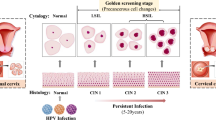Abstract
Breast cancer is one of the leading cancer type among women in worldwide. Many breast cancer patients die every year due to the late diagnosis and treatment. Thus, in recent years, early breast cancer detection systems based on patient’s imagery are in demand. Deep learning attracts many researchers recently and many computer vision applications have come out in various environments. Convolutional neural network (CNN) which is known as deep learning architecture, has achieved impressive results in many applications. CNNs generally suffer from tuning a huge number of parameters which bring a great amount of complexity to the system. In addition, the initialization of the weights of the CNN is another handicap that needs to be handle carefully. In this paper, transfer learning and deep feature extraction methods are used which adapt a pre-trained CNN model to the problem at hand. AlexNet and Vgg16 models are considered in the presented work for feature extraction and AlexNet is used for further fine-tuning. The obtained features are then classified by support vector machines (SVM). Extensive experiments on a publicly available histopathologic breast cancer dataset are carried out and the accuracy scores are calculated for performance evaluation. The evaluation results show that the transfer learning produced better result than deep feature extraction and SVM classification.



Similar content being viewed by others
References
American Cancer Society. About breast cancer. https://www.cancer.org/content/dam/CRC/PDF/Public/8577.00.pdf.
American Cancer Society. Cancer facts & figures 2018. https://www.cancer.org/content/dam/cancer-org/research/cancer-facts-and-statistics/annual-cancer-facts-and-figures/2018/cancer-facts-and-figures-2018.pdf.
Wang L. Early diagnosis of breast cancer. Sensors. 2017;17–1572:1–20.
Dr. Filiz Yenicesu. Meme Kanserinde Görüntüleme Yöntemleri. https://www.duzen.com.tr/workshop/2011/Meme_Kanserinde_Goruntuleme_Y%C3%B6ntemleri_(Dr_Filiz_Yenicesu).pdf.
Joy JE, et al., editors. Saving women’s lives: strategies for improving breast cancer detection and diagnosis. Washington, DC: Natl Acad Press; 2005.
Spanhol FA, Oliveira LS, Petitjean C, Heutte L. A dataset for breast cancer histopathological image classification. IEEE Trans Biomed Eng. 2016;63(7):1455–62.
Gurcan MN, et al. Histopathological image analysis: a review. IEEE Rev Biomed Eng. 2009;2:147–71.
Pearce C. Convolutional neural networks and the analysis of cancer imagery. Stanford University; 2017.
Selvathi D, Poornila A. Aarthy, “Breast cancer detection ın mammogram ımages using deep learning technique” middle-east. J Sci Res. 2017;25(2):417–26.
Geras KJ, et al. High-resolution breast cancer screening with multi-view deep convolutional neural networks. 2017. arXiv preprint arXiv:1703.07047.
Bayramoglu N, Kannala J, Heikkilä J. Deep learning for magnification independent breast cancer histopathology image classification. In: 2016 23rd International conference on pattern recognition (ICPR), pp. 2440–2445. IEEE. 2016.
Krizhevsky A, Sutskever I, Hinton GE. Imagenet classification with deep convolutional neural networks. In: Advances in neural information processing systems, pp. 1106–1114. 2012.
Simonyan K, Zisserman A. Very deep convolutional networks for large-scale image recognition. Computing research repository (CoRR), vol. abs/1409.1556. 2014.
Orenstein EC, Beijbom O. Transfer learning and deep feature extraction for planktonic image data sets. In: 2017 IEEE Winter conference on applications of computer vision (WACV). IEEE. 2017.
Russakovsky O, et al. Imagenet large scale visual recognition challenge. Int J Comput Vis. 2015;115(3):211–52.
Hearst MA, Dumais ST, Osuna E, Platt J, Scholkopf B. Support vector machines. In: IEEE intelligent systems and their applications, vol 13(4), pp. 18–28. July–Aug 1998.
Vedaldi Andrea, Zisserman Andrew. Efficient additive kernels via explicit feature maps. IEEE Trans Pattern Anal Mach İntell. 2012;34(3):480–92.
Spanhol F, Oliveira LS, Petitjean C, Heutte L. Breast cancer histopathological image classification using convolutional neural network. In: International joint conference on neural networks (IJCNN 2016), Vancouver, Canada, 2016.
Author information
Authors and Affiliations
Corresponding author
Additional information
Publisher's Note
Springer Nature remains neutral with regard to jurisdictional claims in published maps and institutional affiliations.
Rights and permissions
About this article
Cite this article
Deniz, E., Şengür, A., Kadiroğlu, Z. et al. Transfer learning based histopathologic image classification for breast cancer detection. Health Inf Sci Syst 6, 18 (2018). https://doi.org/10.1007/s13755-018-0057-x
Received:
Accepted:
Published:
DOI: https://doi.org/10.1007/s13755-018-0057-x




